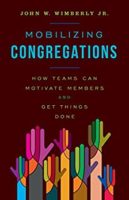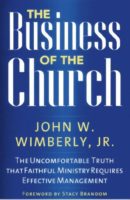One of the things I love about consulting is listening to the way congregations describe themselves. The narratives they spin about themselves are usually filled with a great deal of pride and love—problems they have overcome, faithful work they have done together, loving their favorite pastors, surviving their least-favorite pastors, the list goes on. Since I like to start a consultation by having members tell me what they love about their congregation, the dominant, guiding narrative emerges very quickly.
As I get to know the congregation better in the weeks and months that follow the opening session, what amazes me is the occasional dissonance between the guiding narrative and the actual realities of the congregation. For example, it is not unusual for members to tell me that their congregation is resistant to change. They cite chapter and verse about how the members refuse to make the changes needed to grow the congregation. While the stories about recent resistance to change are usually accurate, oftentimes, the longer narrative is not reflective of a congregation with a history of resisting change. Indeed, the exact opposite may be the case.
Western Presbyterian Church, the congregation I served in Washington, D.C. for thirty years, was created in 1855. By the time I arrived on the scene, they had lived through a Civil War and two world wars; a great depression and gilded age; years when African Americans were subjected to a segregated D.C. to the present when African Americans are mayors and major business leaders; a time when women could not be ordained in the Presbyterian Church to a today when they are the majority of elders on the congregation’s Session. Through all of that change, the congregation served God and their neighborhood. They had good seasons and lean seasons. But they are still there.
Can someone convince me that this congregation didn’t change with the times so they could continue serving God faithfully? Not a chance. When they were founded, they didn’t have an organ. Then they did. Then they had an electric keyboard. Their ministry started with traditional goals. When the Civil War broke out, however, they had to change plans and convert their sanctuary into a hospital for wounded soldiers. In its early days, the congregation was filled with blue collar Washingtonians. Over the decades, it became filled with civil servants working in the government. In the beginning, the congregation was racially white. By the time I left, the membership had growing racial and ethnic diversity. Western Presbyterian Church changed—a lot.
They may not have always liked it, but they changed. If they had always been as resistant to change as they sometimes imagined, they would have died back in one of our nation’s major social-economic changes. Fact of the matter is, there were many congregations in D.C. that did die because they were truly resistant to change.
Western is similar to many of the congregations where I work as a consultant. Yes, there is usually some built-in resistance to change. However, when one takes a macro versus micro perspective, it is hard to miss a congregation’s ability to change—to meet the new challenges each generation brings.
Indeed, I think congregations are among the most agile institutions in our society. Driving through small towns in Iowa and Kansas, I see communities that are filled with vacant storefronts. However, the First Methodist Church or Grace Lutheran Church or whatever church is still there. The lawn is mowed. The trim is painted. Every Sunday, the congregation raises its collective voice in praise of God. They are fewer people to sing the hymns than there were twenty years ago. But they are still there.
The businesses in those towns were the entities that couldn’t/wouldn’t change. As a result, they no longer exist. The congregations, however, changed. At least they changed/evolved enough to still have their doors open.
Do these congregations face huge challenges? You bet. It is hard to grow a congregation’s membership when you only have a couple of new visitors annually. It is hard to raise benevolence dollars when a large part of your congregation is living on Social Security or under-employed. But serving God, they are. Dealing with change, they are.
What is the prevailing narrative about your congregation—its strengths and weaknesses, its attitude toward change and growth? After answering that question, I would like you to step back and look at your congregation’s life from its inception. Is there another narrative running through the life of your congregation? If there is, does it offer different insights into the challenges and opportunities you confront in ministry? Can the alternative narrative be used to motivate members to embrace the changes needed in this time and place?
When I first met them, the leaders of one of the congregations with which I am currently working were despondent. Their membership has declined markedly over the past fifteen years. They are the only Lutheran congregation left in their part of the state.
During a coffee break, one leader said to me, “If all these other Lutheran congregations had to close, aren’t we surely next?” A perfectly valid question. My response was, “Well, another way to see your situation is that you have been able to do something that no other Lutheran congregation in this area has been able to do—continue to worship God and serve your community.”
Narrative 1: Every other congregation died. So we will die.
Narrative 2: Every other congregation died. We haven’t. God still has a purpose for us.
I prefer narrative #2!
I don’t think my approach can be reduced to the difference between a glass half-full and a glass half-empty. I am not raising the question of optimism versus pessimism. I am talking about a congregation’s identity, its sense of self. Is resistance to change built into our identity, or are we much more flexible and adaptable than we have thought? Does our challenging situation mean that we are failures or that we have managed to stay alive and serve God where others have failed?
In my experience, an identity rooted in failure and resistance to change becomes self-fulfilling. An identity rooted in an awareness of the congregation’s ability to minister to generation after generation can also be self-fulfilling. It is crucial that we understand who we are, who we want to be, and, of course, who God is calling us to be.
John Wimberly is an experienced pastor and consultant. As a consultant, he has worked with congregations and judicatories on strategic planning, staff designs for the 21st century, and congregational growth as well as financial and administrative management. He has MBA, MDiv, and PhD (theology) degrees. His books focus on effective management and leadership. John believes congregations can have a bright future!



